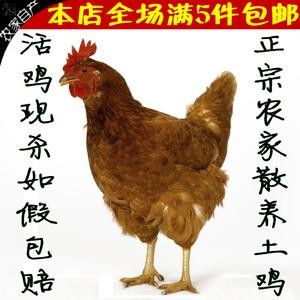[TOC]
一 生成器與yield
插圖:惡搞圖49
若函數體包含yield關鍵字,再調用函數,並不會執行函數體代碼,得到的返回值即生成器對象
>>> def my_range(start,stop,step=1):
... print('start...')
... while start < stop:
... yield start
... start+=step
... print('end...')
...
>>> g=my_range(0,3)
>>> g
<generator object my_range at 0x104105678>生成器內置有__iter__和__next__方法,所以生成器本身就是一個迭代器
>>> g.__iter__
<method-wrapper '__iter__' of generator object at 0x1037d2af0>
>>> g.__next__
<method-wrapper '__next__' of generator object at 0x1037d2af0>插圖:惡搞圖50
因而我們可以用next(生成器)觸發生成器所對應函數的執行,
>>> next(g) # 觸發函數執行直到遇到yield則停止,將yield後的值返回,並在當前位置掛起函數
start...
0
>>> next(g) # 再次調用next(g),函數從上次暫停的位置繼續執行,直到重新遇到yield...
1
>>> next(g) # 周而復始...
2
>>> next(g) # 觸發函數執行沒有遇到yield則無值返回,即取值完畢拋出異常結束迭代
end...
Traceback (most recent call last):
File "<stdin>", line 1, in <module>
StopIteration插圖:惡搞圖51
既然生成器對象屬於迭代器,那麼必然可以使用for循環迭代,如下:
>>> for i in countdown(3):
... print(i)
...
countdown start
3
2
1
Done!有了yield關鍵字,我們就有了一種自定義迭代器的實現方式。yield可以用於返回值,但不同於return,函數一旦遇到return就結束了,而yield可以保存函數的運行狀態掛起函數,用來返回多次值
插圖:惡搞圖52
二 yield表達式應用
在函數內可以採用表達式形式的yield
>>> def eater():
... print('Ready to eat')
... while True:
... food=yield
... print('get the food: %s, and start to eat' %food)
... 可以拿到函數的生成器對象持續爲函數體send值,如下
>>> g=eater() # 得到生成器對象
>>> g
<generator object eater at 0x101b6e2b0>
>>> next(e) # 需要事先”初始化”一次,讓函數掛起在food=yield,等待調用g.send()方法爲其傳值
Ready to eat
>>> g.send('包子')
get the food: 包子, and start to eat
>>> g.send('雞腿')
get the food: 雞腿, and start to eat針對表達式形式的yield,生成器對象必須事先被初始化一次,讓函數掛起在food=yield的位置,等待調用g.send()方法爲函數體傳值,g.send(None)等同於next(g)。
插圖:惡搞圖53
我們可以編寫裝飾器來完成爲所有表達式形式yield對應生成器的初始化操作,如下
def init(func):
def wrapper(*args,**kwargs):
g=func(*args,**kwargs)
next(g)
return g
return wrapper
@init
def eater():
print('Ready to eat')
while True:
food=yield
print('get the food: %s, and start to eat' %food)表達式形式的yield也可以用於返回多次值,即變量名=yield 值的形式,如下
>>> def eater():
... print('Ready to eat')
... food_list=[]
... while True:
... food=yield food_list
... food_list.append(food)
...
>>> e=eater()
>>> next(e)
Ready to eat
[]
>>> e.send('蒸羊羔')
['蒸羊羔']
>>> e.send('蒸熊掌')
['蒸羊羔', '蒸熊掌']
>>> e.send('蒸鹿尾兒')
['蒸羊羔', '蒸熊掌', '蒸鹿尾兒']插圖:惡搞圖55
三 三元表達式、列表生成式、生成器表達式
3.1 三元表達式
三元表達式是python爲我們提供的一種簡化代碼的解決方案,語法如下
res = 條件成立時返回的值 if 條件 else 條件不成立時返回的值針對下述場景
def max2(x,y):
if x > y:
return x
else:
return y
res = max2(1,2)用三元表達式可以一行解決
x=1
y=2
res = x if x > y else y # 三元表達式插圖:惡搞圖55
3.2 列表生成式
列表生成式是python爲我們提供的一種簡化代碼的解決方案,用來快速生成列表,語法如下
[expression for item1 in iterable1 if condition1
for item2 in iterable2 if condition2
...
for itemN in iterableN if conditionN
]
#類似於
res=[]
for item1 in iterable1:
if condition1:
for item2 in iterable2:
if condition2
...
for itemN in iterableN:
if conditionN:
res.append(expression)針對下述場景
egg_list=[]
for i in range(10):
egg_list.append('雞蛋%s' %i)用列表生成式可以一行解決
egg_list=['雞蛋%s' %i for i in range(10)]插圖:惡搞圖56
3.3 生成器表達式
創建一個生成器對象有兩種方式,一種是調用帶yield關鍵字的函數,另一種就是生成器表達式,與列表生成式的語法格式相同,只需要將[]換成(),即:
(expression for item in iterable if condition)對比列表生成式返回的是一個列表,生成器表達式返回的是一個生成器對象
>>> [x*x for x in range(3)]
[0, 1, 4]
>>> g=(x*x for x in range(3))
>>> g
<generator object <genexpr> at 0x101be0ba0>對比列表生成式,生成器表達式的優點自然是節省內存(一次只產生一個值在內存中)
>>> next(g)
0
>>> next(g)
1
>>> next(g)
4
>>> next(g) #拋出異常StopIteration如果我們要讀取一個大文件的字節數,應該基於生成器表達式的方式完成
with open('db.txt','rb') as f:
nums=(len(line) for line in f)
total_size=sum(nums) # 依次執行next(nums),然後累加到一起得到結果=插圖:惡搞圖57










